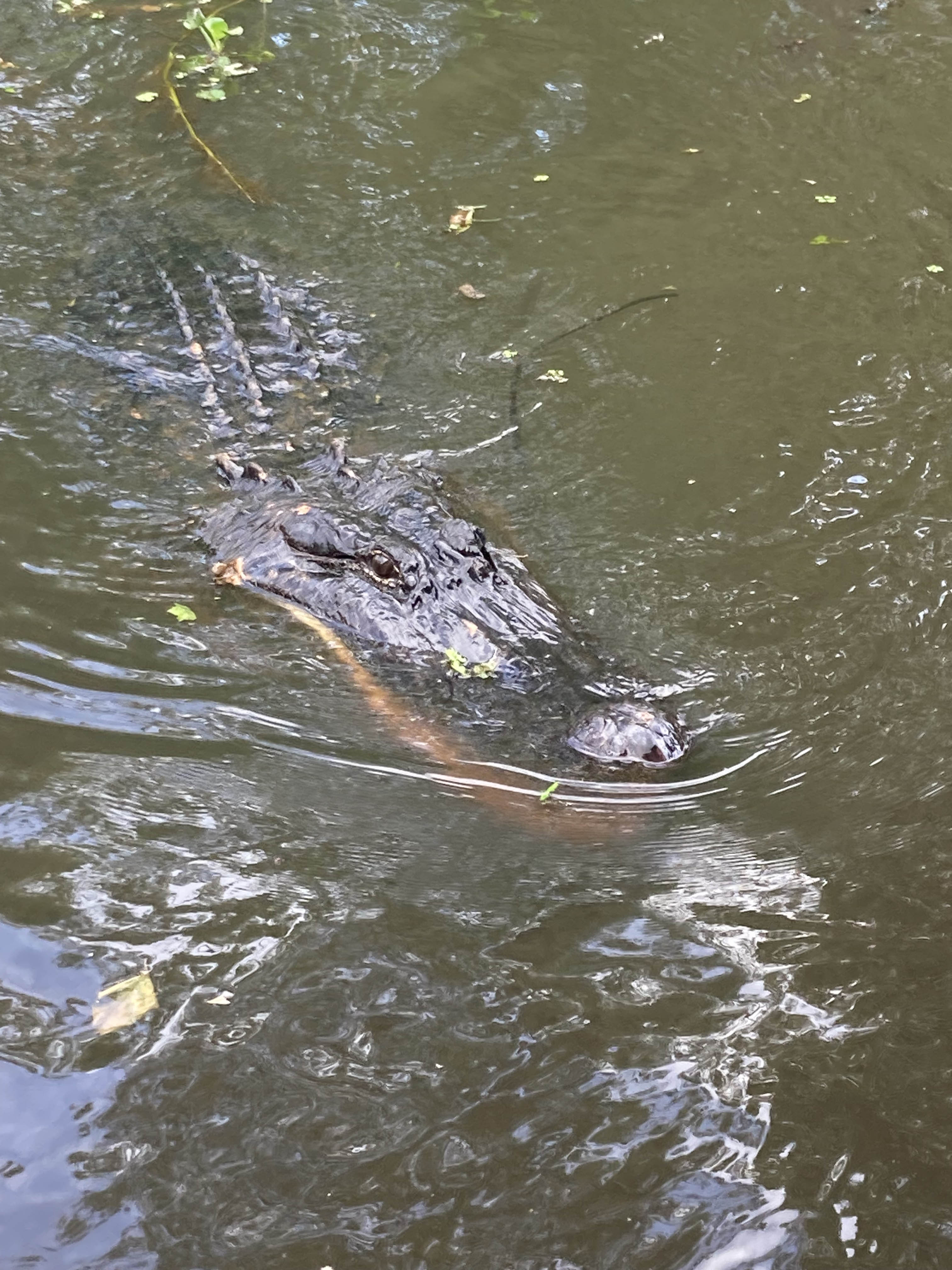Alligators in Arkansas
Contact
University of Arkansas System Division of Agriculture
Cooperative Extension Service
2301 S. University Ave.
Little Rock, AR 72204

Alligators in Arkansas
Last month I spent a week in southern Louisiana across the levee from the Atchafalaya Basin, the largest contiguous piece of swampland in the United States. While there we saw alligators — lots of gators. This got me wondering about the status of these big reptiles in Arkansas.
These giant reptiles used to be fairly common in the flooded swamplands of the Mississippi Delta and along the Red River in southeastern Arkansas, but habitat loss and overhunting all but wiped out our native population by 1960 when the Game and Fish people started regulating the taking of gators. The American alligator made it on the Endangered Species List when the legislation was enacted in 1973. During the 1970s, the Game and Fish folks imported wild-caught alligators from Louisiana and successfully reestablished populations across the southern part of the state. Eighty percent of these wild releases went to private landowners.
Alligators are a tough, resilient species and in a decade the population was recovering nicely. It is estimated there are between two and three million alligators in the United States, with 2,000 to 3,000 in Arkansas alone. Today the alligators are found north into Arkansas to the Arkansas River and, along the Mississippi River into northeastern counties. But in reality, most gator sightings in the state are confined to the southern third of the state, especially in the clusters of counties in the southeastern and southwestern part of the state. The mountainous counties are too cold for these cold-blooded reptiles.
The population of alligators has sufficiently recovered such that in 2023, more than 200 of the animals were taken during the fall hunting season. Hunting on public lands is limited to two four-day hunting seasons in September that are awarded on a lottery basis. Hunting on private land has different regulations but still requires a license.
Alligators and their cousins, the crocodiles, share an ancient lineage reaching back at least 250 million years and predate dinosaurs. With the breakup of Pangia, the crocodiles (tolerant of saltwater) and the alligators (freshwater) began to diverge. I’ve collected fish fossils from the Green River formations in Wyoming that date back 52 million years. In that same formation – though I was not lucky enough to find one – skeletons of freshwater caimans (a close relative of alligators) have been found. Fossil skulls of American alligators eight million years old that are indistinguishable from modern specimens are known from Florida. So, if a species is going to survive a long time, it has to be tough and resilient.
Alligators are big. Males often are 12 to 15 feet long, with females usually smaller, averaging eight to 10 feet. Should you want to guess the length of one of these giants, something I would personally not recommend, measure the distance from the nose to the eyes in inches. That distance equals the overall length of the animal in feet.
There have been no reports of alligator attacks on humans in Arkansas in the past 20 years, although a hotline established to report nuisance encounters routinely receives about 100 calls a year. Gator attacks, including a death or two each year, are primarily from Florida and South Carolina where homes are routinely built in prime alligator habitat. I found no mention of how many lapdogs met an untimely demise in these same areas.
While the amount of swampland available to alligators and other swamp dwellers is greatly diminished in Arkansas, it is good to know they can still find a place to live in the rivers, lakes and drainage ditches surrounding our low-lying farm fields. But if you are out at night and your flashlight encounters a pair of bright red eyes following your every move, keep your hand in the boat.
